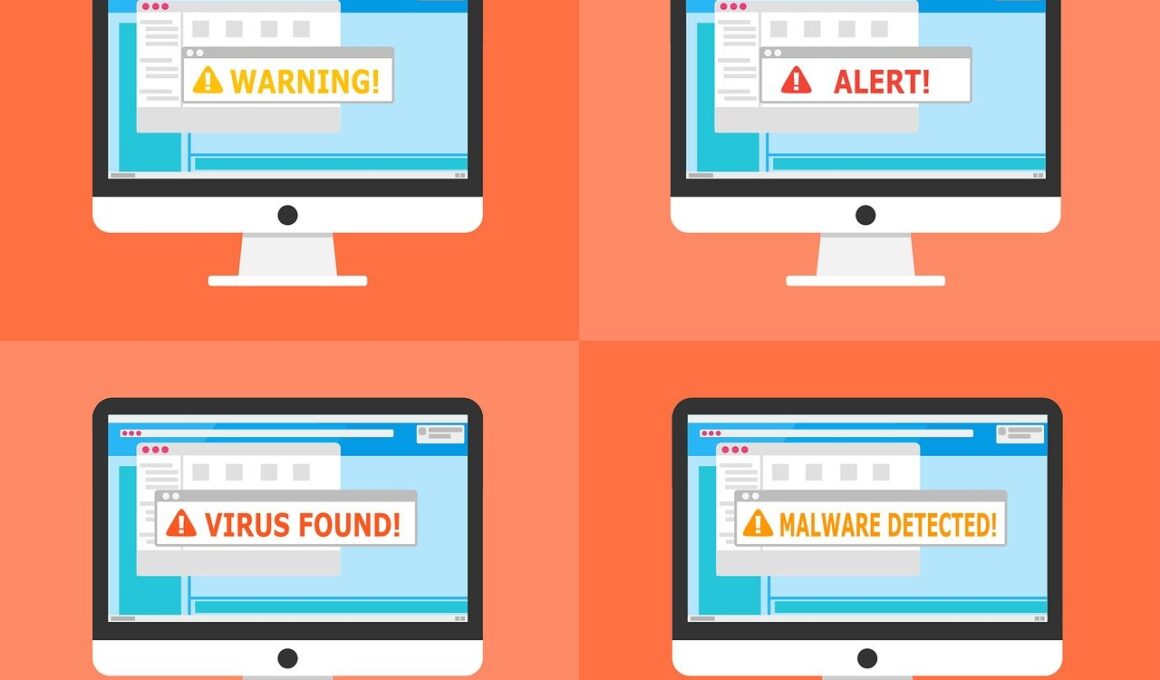The Effectiveness of Twitter’s Spam Filters for Security
Twitter plays a vital role in social media, providing users with a platform to connect and share information effectively. However, concerns regarding spam accounts and malicious content have prompted the need for robust safety measures. Spam filters are crucial in managing the vast influx of tweets, especially during peak news periods. These filters aim to minimize harmful content that can lead to misinformation and user harassment. The effectiveness of Twitter’s spam filters directly impacts user experience and security. Users often report frustration over spam messages infiltrating their accounts. Twitter’s algorithms are designed to prioritize genuine interactions, filtering out automation-driven accounts. By employing a combination of machine learning and community reporting, Twitter evaluates user behavior patterns. Negative patterns promote restriction or removal of accounts that seem suspicious. Understanding how these measures function sheds light on their effectiveness in enhancing overall user safety. To further enhance user experience, Twitter has introduced tools that allow users to customize their privacy settings. This empowers users to take control over their interactions on the platform and improve their overall experience.
The spam filters on Twitter are constantly evolving to respond to emerging threats effectively. With millions of tweets sent every minute, ensuring that spam does not overpower genuine posts is essential. These filters analyze numerous factors, including user behavior, frequency of tweets, and engagement metrics to determine spam behavior. Users expect that the platform will keep their timelines free from irrelevant or harmful content, and Twitter aims to meet this expectation. The stringent evaluation helps in identifying fake accounts that may pose a risk. In addition to algorithms, user feedback and reporting mechanisms are integral. The community plays a significant role in identifying problematic accounts. Twitter’s safety team reviews these reports, taking action as warranted. Continuous updates to the algorithm are also vital in adapting to new strategies employed by spammers. Recent studies have shown that improved accuracy in detecting spam results in better overall user satisfaction. Making informed decisions regarding the application of spam filters ensures that Twitter remains a trusted platform for real-time conversations. Strengthening these measures thereby reduces the risk of misinformation permeating through the feeds of unsuspecting users.
Evaluating the impact of spam filters on account safety is pivotal for Twitter, especially as trust issues arise among users. The platform’s measures, aimed at detecting unusual activity, contribute greatly to protecting accounts from potential breaches. Automated spam accounts can jeopardize the credibility of genuine users and communities. Continuous learning from data samples allows Twitter’s filters to get smarter over time. Machine learning plays a central role in processing the overwhelming amount of content shared daily. This innovative approach allows the platform to adapt based on user responses and feedback. However, the challenge remains to balance user freedom while preventing spam. Users might appreciate an open exchange of ideas, but spam can make these interactions difficult and disheartening. Additionally, false positives—where legitimate accounts are flagged—pose a problem and can frustrate users. Twitter must ensure its safety measures effectively distinguish between genuine and false interactions. This balance is crucial for maintaining platform integrity and user engagement. Providing clear guidelines on reporting spam also encourages community participation in the fight against it, thus enhancing Twitter’s overall safety landscape.
Challenges in Addressing Spam
Identifying spam is a daunting task for Twitter, particularly as spammers continuously refine their techniques. New spam tactics emerge, evolving alongside advances in technology. As such, Twitter’s spam filters must remain adaptable and resilient to shifting behaviors. One significant challenge lies in the human element; users can unknowingly become conduits for spam by interacting or following suspicious accounts. Educating users about identifying spam accounts is a shared responsibility. Furthermore, spammers profit from exploiting various social engineering tactics, trying to deceive users proactively. Protecting users from threats requires ongoing education, not just technological solutions. The integration of user education with spam filtering systems can dramatically reduce the effectiveness of spam initiatives. Also, transparency around spam filtering processes is critical for fostering trust. Users need insights into how their reports contribute to system improvements. They should understand why certain accounts are flagged or removed. This kind of transparency can increase user confidence in Twitter’s commitment to safety. By forming a collaborative community that is vigilant against spam, Twitter can create an environment where safe and meaningful interactions become a norm.
Despite the challenges, Twitter must continuously assess and improve its spam filters to maintain user satisfaction and safety. To achieve this, it collaborates with security experts, researchers, and the user community to gather insights on emerging trends and vulnerabilities. Implementing robust testing protocols ensures that filters effectively block spam while preserving genuine engagement. Moreover, Twitter employs various metrics to evaluate its filters’ performance, helping recognize areas needing improvement. The incorporation of user feedback into filter adjustments leads to a more effective system. As users report their experiences, they offer vital information that can enhance the platform’s security features. Personalizing security settings empowers users to take proactive measures against unwanted content. Innovations, such as implementing automated response suggestions based on user preferences, may further curate user timelines. Twitter users increasingly expect responsive and proactive measures concerning their security. Utilizing a combination of advanced technology and human insight can enhance the platform’s resilience against spam threats. As a result, it not only fulfills user expectations but strengthens overall trust in the platform’s commitment to user privacy and safety.
Future Improvements to Spam Filters
To further enhance the effectiveness of spam filters, Twitter could consider adopting advanced AI tools that utilize natural language processing techniques. These tools allow for a deeper analysis of the language used within tweets, making it easier to identify spammy behavior and malicious intent. Such tools could significantly enhance the detection process, allowing for quicker and more accurate flagging of harmful content. Furthermore, establishing closer ties with cybersecurity firms may enable Twitter to stay ahead of emerging spam trends. Collaborating provides insights that improve strategies in combating spam. Users can benefit from improved threat detection and response times as a consequence. Engaging directly with security experts can also lead to enhanced user safety training materials. Having readily available resources to help users safeguard their accounts against spam or phishing attempts is paramount. By investing in both technology and community awareness, Twitter may strengthen its defenses against evolving threats. The long-term goal remains to create a more secure user environment, allowing users to engage without constant worries over spam or malicious content infiltrating their feeds.
Moreover, fostering community trust is indispensable to the success of Twitter’s safety measures. By openly communicating about challenges, successes, and areas for improvement, Twitter encourages user engagement. Transparency builds confidence in spam filter processes and assures users that their concerns are taken seriously. Additionally, providing users with insights into the algorithms and data that drive spam detection can alleviate fears of arbitrary account restrictions. Creating forums for discussions regarding spam filtering also allows users to share experiences and cultivate a culture of collective vigilance. Knowledge-sharing among users fosters a sense of belonging and responsibility. By promoting safety measures and encouraging user ownership, Twitter leverages communal effort in tackling spam. Users must feel empowered to understand and influence their safety on the platform. Improving spam filter mechanisms presents an opportunity for Twitter to reinforce its identity as a leader in user safety. The ultimate vision encompasses a social media landscape where users connect freely without fear of spam interference. Twitter’s commitment to adapting its safety measures positions it strongly in an evolving digital world, ready to face tomorrow’s challenges while prioritizing user privacy and security.
In conclusion, Twitter’s spam filters are critical to maintaining a healthy online environment for its users. While challenges persist, continuous improvements made through technology and collaboration with users can substantially enhance security measures. Leveraging machine learning, community insights, and advanced algorithms ensures that spam threats are systematically minimized. Moreover, fostering a culture of responsibility and awareness among users encourages greater collective action against spam. Twitter’s proactive approach to educate users while adapting to changing spam tactics will not only protect accounts but also enhance user satisfaction and trust. By balancing freedom of expression with the need for security, Twitter can create an inviting environment. Striving towards transparent spam filter processes and continued engagement with community concerns signifies its commitment to user safety. Through these deliberate undertakings, Twitter can reinforce its position as a safe platform for real-time conversations. The evolving landscape of social media necessitates a dedicated approach, as user security remains paramount. Thus, Twitter’s efforts towards refining spam filters effectively cater to user needs while enhancing the overall experience on the platform.


